Courses
The Bandon Experience
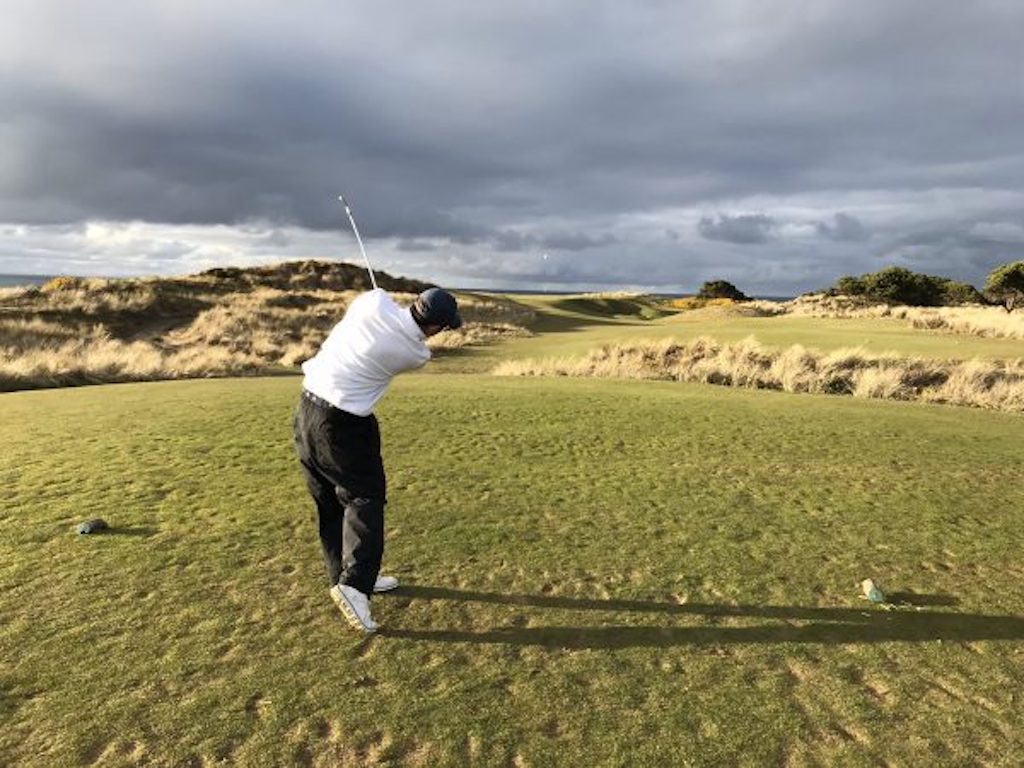
Do you ever have one of those memories that jumps up and slaps you in the face? It happened to me the other day. It wasn’t the first time, and I’m sure it won’t be the last. One of those memories that forces you to stop whatever it is that you are doing and reminisce. It’s been just over a year since I made the trip to Bandon, Oregon, and I still think about it often.

I find myself trying to explain the experience to friends and golf buddies back home but it’s nearly impossible to do it justice. My attempts inevitably end with “you just need to take a trip up there and see for yourself. Trust me.”
I have hit more putts from off the green in the last year than I did in 25 years of golf before that. That’s Bandon. I don’t shy away from high winds and cold temperate golf anymore. That’s Bandon. I look forward to walking 18 now and am certainly not too proud to use a pushcart. That’s Bandon. But most of all, I think I better appreciate the beauty of the game. I marvel at how gorgeous each golf course can be in its own way. And I yearn for my next chance to play golf as it was meant to be. That’s Bandon.

Before I headed to the great northwest, I read a book titled “Dream Golf: The Making of Bandon Dunes.” It tells the story of how Mike Keiser created his golf wonderland in Oregon and why he chose the architects he ended up working with. It was a tremendous read and I loved every word. And while it certainly made me more eager to arrive, it did’t prepare me for the few days of golf I had ahead of me.
Three of my best friends and I flew in from all over the country to play these courses. Nashville, Houston, Fort Worth, and San Francisco converged on a little town in Oregon. They say Bandon Dunes is like playing golf in Scotland; only it’s harder to get to. There are several different ways to arrive, but we flew to San Francisco and then took the short flight to North Bend, Oregon. There is a shuttle bus that picks you up from the airport and then takes you the remaining 30-or-so minutes to the main clubhouse.


We planned our trip in February, quite frankly, to save some money. The course fees are much cheaper in the winter months and while there is a higher chance for bad weather, we all knew that bad weather was possible year round in the Pacific Northwest anyway. We were prepared to play in less-than-ideal conditions, so we decided to pay less for it. Also, if you play two rounds a day like we did, the second 18 is priced half off. There are no carts on the property so you’ll be walking, but come on! Half off golf to play some of the best courses in the country! You need to be playing 36 a day. We booked our first 18 holes of the day in advance and then we would make an afternoon tee time the morning of. I recommend doing this if you aren’t sure which of the courses you want to play twice. It is definitely doable to hold off on waiting to make your second tee time of the day until you are on property. At least it was in February.

As incredible as the golf ended up being, I may have been more impressed with how efficiently the well-oiled Bandon machine operates. Our golf clubs, which were shipped in advance to make travel easier, were ready for us as soon as we arrived. The entire trip went this smooth. The folks at Bandon have convenience down to a science. Each clubhouse, course and practice facility is within the friendly confines of the Bandon Dunes gates. Shuttles work on a schedule that is frequent enough to prevent any downtime. Each clubhouse has a restaurant serving breakfast, lunch and dinner, all offering a unique menu to fit any taste. More on that a bit later. But imagine Disney Land for the golf nut.
The Preserve
We departed the airport shuttle, changed shoes right there on the spot and immediately headed for The Preserve, a Coore-Crenshaw designed, 13-hole par 3 course. Our luggage was handled by staff and their main priority was to make sure we got some golf in before the end of the day. We only had a couple hours of daylight left after travel, so this dynamite little track was just the right amount of golf to whet our appetite. When you make your trip to Bandon Dunes, do not be tempted to skip this course just because it is a par-3 track. Find time. Make time. Some of the best views on the property are out on The Preserve. The holes range from 63 yards to 150 yards with decision making winds on each tee. We ended up playing it again before we left for the airport at the end of our visit. The perfect bookend.






Food and Lodging
Our favorite spot to take dinner was without a doubt, McKee’s Pub. A lively atmosphere with golf history on the walls, the place is usually full of tired golfers and stories of missed birdie putts. Pro tip: the scotch eggs are a game changer. McKee’s is stocked full of good bar food and local craft brews. The meatloaf is a hefty portion and honestly, it may have saved my life after our first day of 36 holes. Above McKee’s is another bar and banquet style room where you can grab a drink if you need to wait for a table.

Every clubhouse on site has their own restaurant with a unique menu and beverage list. Trails End is within the Bandon Trails and Preserve Clubhouse and provides views of both courses. The menu is asian influenced and the noodle bowl is a legit lunch option. The Pacific Grill provides plenty of seafood dishes and it overlooks the Pacific Dunes finishing holes. It is also steps away from the Punchbowl, a 100,000 square foot putting green/course designed by Tom Doak. The PunchBowl is a fantastic way to kill an hour and practice putting on the undulated greens found on the property. There is also a green-side bar to help make the experience even more memorable. It’s a great spot to gamble a few bucks. We played two man teams and my partner was unconsciously good. So I drank for free. Thanks buddy.

The main lodge has both the Tufted Puffin Lounge and the Bunker Bar. Both spots are casual and affordable. The Bunker is also home to a billiards table, poker table and fantastic selection of spirits.

Bandon Dunes has lodging options to suit all types of guests and budgets. You can stay within the walls of the main lodge or also book from one of many apartment/condo style rooms for larger groups. We stayed in a 2 bedroom apartment with common area near Chrome Lake. The shuttles can pick you up from your room whenever you desire and take you directly to your first tee. I was genuinely shocked at how wonderfully easy it was to get around the property. Never a wasted second. And depending on the month, room rates start as low as $100 a night. But don’t spend too much on rooms. Most of our time was spent on the course.
Old Macdonald

Our first round of 18 was at Old Macdonald, named after famed course architect Charles Blair Macdonald. This was the fourth course built on property and the second track designed by Tom Doak. This time he was assisted by Jim Urbina to create the 6,944 yard (from the tips–it’s so much better from back there) par-71 course. Golf Digest’s most recent Top 100 ranking of United State’s public golf courses have all four of the Bandon tracks listed in the Top 15. Pacific Dunes comes in at number two, followed by Bandon Dunes at seven, then Old MacDonald at 10 and finally Bandon Trails at 14.

The round at Old Mac started with light dew on the ground and clouds in the sky but the temperature was pleasant enough for a light sweater. I didn’t know what to expect but whatever I had in mind, this course was different. It’s a tribute to all the classic designers with template hole after template hole. A true links style course, with the famed “Ghost Tree” visible from many spots around the course. The greens were massive and tricky, but the layout itself played incredibly fair. I think that is one of the best things about the golf at Bandon…it never was too difficult. It’s a place for golfers of all skill level to enjoy.

Old Mac had incredible ocean views, but some of the best moments of my round came from the shots that I couldn’t see at all. The course provided several elevation changes that forced us to fire at tops of flags with no pins in sight. And when we finally made it up the hill with our pushcarts, our balls could’ve been anywhere on those massive greens depending on the slope Doak and Urbina dealt to us. We only played this course one time on the trip, but I feel Old Mac is the best suited of the quartet for a drastic score improvement on the second time around. I look forward to that chance someday.



Pacific Dunes
By the time we teed off on our afternoon round at Pacific Dunes, the infamous Oregon winds had picked up. I genuinely don’t remember the first four holes because my head was down the entire time. Thankfully, we were granted some relief as the winds decided to die down and give way to clear skies. And just in time for some of the most spectacular ocean view holes I have ever played in my life.
Pacific is another Tom Doak design. The course plays to 6,633 yards and is a par 71. It was the second course built on property and a trio of par threes on the back nine were designed to best utilize the ocean frontage for several breathtaking holes.

Two of the fellas in my group decided to share a caddie for this round. The guy was a real gem and he provided us with stories that enhanced our experience a great deal. I would recommend doing this if you have a little extra money to spend. But keep in mind, you’re also going to want to break the bank on merchandise as well…each course has their own logo. One of my friends may have gone a bit overboard on gear. He’s a logo guy. And as long as we are on the subject of logos, my buddy ranks them as follows: Preserve (it really is so good), Bandon Dunes, Pacific Dunes, Punchbowl, Bandon Trails and then Old Mac.


Pacific Dunes probably has the best collection of views on property and they alone might justify the number 2 ranking on the best 100 US public courses. The high winds made it tough to judge just how difficult this course actually plays, but it really didn’t matter. Just being out there and looking around made it an enjoyable round.
As our round progressed, it became apparent that we might struggle to finish before nightfall. We picked up the pace and played ready golf but things weren’t looking good when we reached 17, a beautiful but lengthy par three over a gorge. But then the charm of Bandon showed its face. The group ahead of us, obviously realizing that we were in a race against time, waved us up and stepped aside, allowing us to hit our tee shots before they putted. We all hit and then began a somewhat lengthy walk around the gorge to the green, allowing the group ahead to putt out and proceed to the 18th tee. And we finished our round with just barely enough light to see our final putts roll in the cup. Had it not been for the kindness of those golfers on 17, whom we did not know one bit, we likely wouldn’t have finished our round. But that’s Bandon.



Bandon Trails
I went into our morning round at Bandon Trails with little excitement. I am an ocean-view kind of golfer and I had just been completely spoiled by Pacific Dunes. I knew this Coore-Crenshaw par 71 layout was all internal on the property, away from the ocean and that didn’t have my juices flowing.
By the time I had played the first three holes, all of that had changed. This course was special.

Looking back on it now, the lowest ranked course at Bandon may easily have been the round I enjoyed the most. The third course built on the property, Bill Coore and Ben Crenshaw somehow found a direct line to my golf heart without distracting me with views of blue water. The routing at Trails lead my foursome through forest and dunes alike, up hills and over water. The greens were challenging but fair and the fairways attainable and inviting.


The coastal forest provided a beautiful backdrop that I had largely ignored in my Bandon preparation. Trails, in my opinion, is the most underrated of the four Bandon courses. The par 4 14th hole stands out in my mind as a hole I’d like to play over and over again. The elevated tee box looks down on a drive-able par 4 begging for an escalated swing speed. I hit driver. Of course. But the target, a hog back green, is small and deadly and full of terrors. Any miss left or right required a savvy short game to salvage a good score. It was a wonderful golf hole and a highlight of the trip. One of my playing partners would like me to mention that he made birdie, I’m sure.
When I think back on my Bandon trip, I first think of those oceans holes on Bandon and Pacific Dunes. But it doesn’t take long for my mind to take me back to Trails. From a pure golf perspective, it is the best course on property.






Bandon Dunes
I had read up more on the original 18 at Bandon Dunes than either of the other three courses. Designed by relatively unknown (at the time) Scottish architect David McLay-Kidd, the course that started it all opened in 1999 and the rest was history. Bandon Dunes plays at 6,732 yards, par 72 and winds along the pacific coast towards a climactic finish that is as good as any in golf.
Weather for our round at Bandon was ideal. Overcast, slight wind but not too cold. It turns out, our decision to play in February worked out great for us. We dealt with rain on the morning of our third day but we were still able to fit in our golf.
Golf rankers tend to rave about Pacific Dunes, but I will take Bandon over Pacific, pound for pound, any day of the week. The bunkers are deep and large and the fairways are pristine condition. And while Pacific Dunes clearly worked hard to maximize its ocean views, the flow of Bandon Dunes seemed more natural while still providing incredible coastal holes.


Hole 16 is a classic risk reward par 4. Reachable off the tee with a typical down wind, the smart play is to poke your spoon out to the raised fairway on the left. But with the pacific ocean crashing ashore to our right and the sun setting behind, we all decided to hit driver. And it worked out for a couple of us. This is arguably the most beautiful hole I’ve ever played in my life and I remember walking off the green, looking back towards the tee box thinking “wow…I am not sure it gets any better than that.”
Until I played the next hole. And then the hole after that. Both 17 and 18 are incredible golf holes in their own right. The closing stretch at Bandon Dunes is truly as good as it gets. And if you time it correctly like we did, your walk down 18 is illuminated by the setting sun bouncing off the windows of the clubhouse. Life is good.





People who visit Bandon love to rank the courses and then ask for your rank as well. Half of the conversations at McKee’s Pub are started with this very topic. And while you certainly can’t go wrong with any selection, for me it starts and ends with the original, Bandon Dunes. I’d rank Bandon Trails second, Pacific Dunes third and Old MacDonald fourth. And you know what…each of my three buddies put those courses in a different order.
There is something for everyone at Bandon Dunes. You just need to take a trip up there and see for yourself. Trust me.
Courses
Ryder Cup 2025: Crossing to Bethpage – NY state park golf, part 3
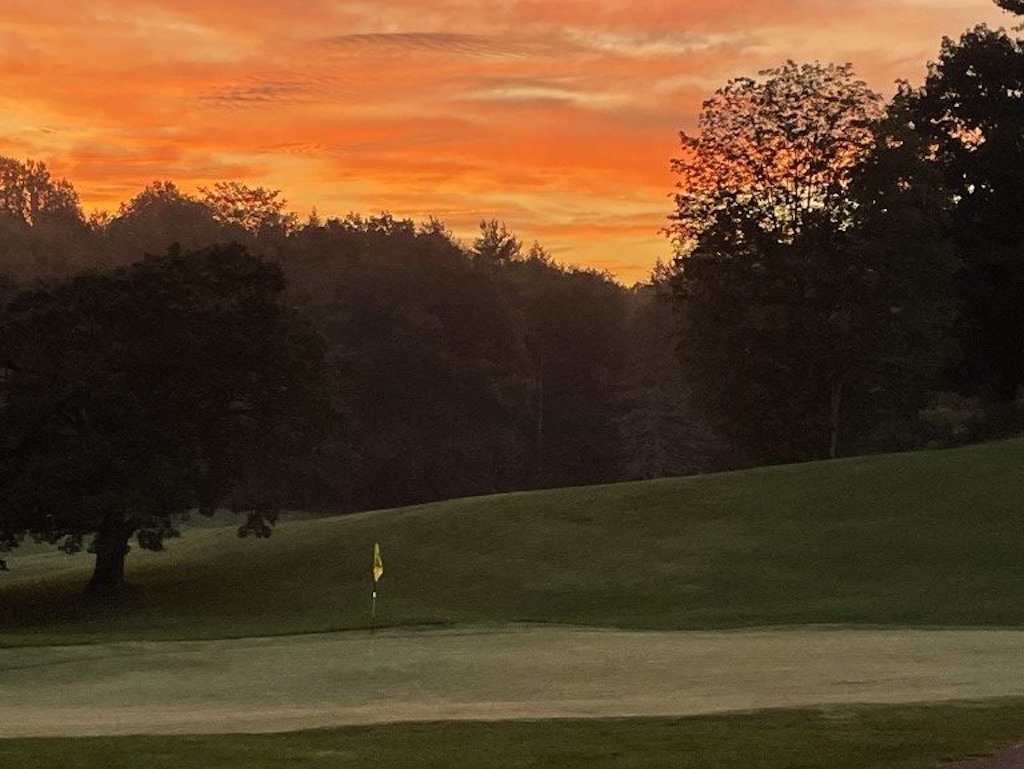
The history of the acquisition of lands for state parks and properties is a varied one across the Empire State. The first state park, Niagara Falls, was established in 1885. Many of us locals would love to have a scenic golf course located on Goat Island, with holes that ease their way next to Horseshoe, Niagara, and Bridal Veil Falls. We do understand, however, that the parkland is better suited to accessibility by and for all residents and visitors.
Work on state parks, especially the introduction of golf courses, ramped up in the 1930s, thanks to President Franklin Delano Roosevelt’s Civilian Conservation Corps and Works Progress programs. The state continues to acquire lands today, to preserve open spaces and critical habitats. For the golfing faithful, the 24 state-owned golf course properties offer affordable and accessible municipal golf.
The birth story of the 24 golf courses has the following chronology:
Battle Island – 1919
Sag Harbor – 1926
Bethpage Green (as Lenox Hill) 1923; Blue and Red – 1935; Black – 1936; Yellow – 1958
Green Lakes – 1935
Saratoga Spa – 1936
James Baird – 1948
Wellesley Island – 1960
Dinsmore – 1962 (18 hole expansion)
Sunken Meadow – 1962 (18), 1964 (third 9)
Soaring Eagles – 1963
Indian Hills – 1964
Beaver Island – 1965
Chenango Valley – 1967 (18 hole expansion)
St. Lawrence – 1967 (18 hole expansion)
Montauk Downs – 1968 (current design)
Rockland Lake – 1969
Robert Moses Pitch and Putt – 1970
Bonavista – 1970
Springbrook Greens – 1995
From the golden age of the early 1900s to the end of the last century, the courses of the New York State park system grew from one to many. Some (Lenox Hills) were adopted into the system, while others (Chenango, St. Lawrence, Dinsmore) expanded from nine to eighteen holes. What does the 21st century hold? That’s a tough question to pose, much less answer, but it concludes its first 25 years with one of the most notable golf competitions on the planet, at its flagship park.
It’s easy to divide the 19 parks that host golf courses into regions, but much more challenging to build a tour. Our second trip, to keep the disappointment to a minimum, was scuttled. Simply not enough vacation time for this working stiff to make a trip along Lake Ontario and into the Adirondacks. I’ve played enough golf in the North Country, however, to know how special those upper region layouts are.
Battle Island
From Mary Gregg and the NYS Parks website, we learn a nice amount about Battle Island. Ms. Gregg offers these insights:
“This park derived its name from a battle which took place on a nearby island on the Oswego River in the mid-1700s. In 1916 most of the land owned by F. A. Emerick was deeded to the state. Battle Island officially became a state park in 1938 when the remaining land was turned over. The popular course near Fulton lies adjacent to the Oswego River and offers golfers magnificent views from a number of its
fairways and greens. The 18-hole Battle Island State Park Golf Course is a challenging one for the budding professional and amateur player.“From my own experience working at both Green Lakes and Bethpage; Battle Island is a short course but a challenging one. We don’t have any bunkers on the course, but the greens are quite challenging, hard to find many flat areas for pin placements. The views of the Oswego River are quite manificient throughout the season and bring a variety of wilflife throughout the season as well.”
As a youth, I heard tales of Battle Island’s brief but fierce layout from an uncle, an alumnus of the city’s state university campus. Short hitters have nothing to fear at Battle Island, but the wayward driver of the ball should certainly have a long day over the golf course.
Dinsmore
Dinsmore was expanded to 18 holes in 1962. Tom Buggy penned an insightful history of the course for the Staatsburgh State Historic Site, and we are happy to link it here. The course is the northernmost state park layout along the Hudson River, located in Hyde Park, the retreat of President Franklin Delano Roosevelt.
The history of Dinsmore is an interesting, curvy one. The original nine holes on property were a collaborative affair, built on 1890s land shared by three prominent area families. Known then as the Staatsburgh golf club, the daughter of the original designer would eventually donate the land to New York State, establishing the park that includes the adjacent historic homesite. An additional nine holes were added to the property in 1962. Two years later, the original holes were rerouted to form the current back nine, along the southern portion of the property.
Rockland Lake
The Rockland Lake State Park golf course could be forgiven for the occasional bout of envy. It sits in a neighborhood occupied by some of the mid-Hudson River’s finer private clubs. A half mile away is Paramount Country Club, an A.W. Tillinghast design. Tilly is also credited with the majority of the design work at Bethpage Black, a credit that he shares with Joseph Burbeck. Across the great river sits Sleepy Hollow Country Club, whose lineage involves work by Tillinghast, but mainly from C.B. Macdonald and Seth Raynor. And on and on.
In its origin days, Rockland Lake was used as a natural ice factory by the Knickerbocker company. So pure was the ice that emanated from its waters that the lake supplied much of New York City in those pre-home electricity days. In this new millennium, Rockland Lake plays host in summer months to many of the area’s golfers. Despite its proximity to the waters of the lake, a pond, and the river, none of the holes is within a mighty strike of the wet stuff.
Rockland Lake’s full-size course was designed in the 1950s by David Gordon, a well-traveled, regional architect from eastern New York and Pennsylvania. The big course sits on the northern end of the park. The property also boasts an 18-hole short course, located in the shadows of Hook Mountain, south of the lake that gives the park its name.
Saratoga Spa
Location is often everything. When your golf course is located not only inside a state park, adjacent to a popular performing arts center within the confines of the park, and a nearby, world-famous horse racing track, you have potential for a popular spot. Saratoga Spa’s original golf holes opened in the 1930s, although no architect is given credit for the design. In the late 1950s, William Mitchell did an overhaul of the layout, expanding it to the trace that is in the ground today. During the mid-2010s, Barry Jordan, another regional architect, came in to rebuild the entire 10th green and upgrade bunker drainage throughout the golf course.
Saratoga Spa boasts a testing, 18-hole layout that stretches beyond 7,000 yards. Alongside is a short course, with seven par-three holes and two par-fours. The course features a new fleet of motorized carts with GPS monitors, ensuring that golfers know where they stand at all moments of the round. In addition to the golf course, nearly a dozen natural springs flow through the Saratoga Spa Park. A large pool complex for recreation completes the park’s offerings.
Springbrook Greens
Alan Tomlinson may be the Hayden “Sidd” Finch of golf course architecture. He completed Springbrook Greens in 1995 … then disappeared. Nothing more is known about him, and no other courses bear witness to his skills as a router of golf holes. Springbrook Greens tips out at 5,800 yards and finds itself close to Lake Ontario’s southern shore. If you drew a vertical ray to the south, it would drop a bit west of Syracuse. It’s not much away from Battle Island, so there are a few state courses within a brief drive of each other, in this part of the state.
Springbrook Greens had an interesting first quarter-century of life, then COVID hit, and like many places, things went a bit off path. Fortunately for the region and its golfers, the Randall family leased the course from New York State Parks (much like Bonavista in an earlier step of this series) and brought the course back from a near-death experience. It’s pretty easy for a course to go astray, especially when basic maintenance elements break down. Among the images in the gallery, one will stand out for its lack of grass. Ron Randal tells the story like this:
“This was the 10th green in December the year before I took over. This was the worst but many had large spots that looked like this. I assumed it was a lack of proper maintenance but what I didn’t realize was that a lot of it was just irrigation heads that didn’t work or didn’t work right. This one was missing a head so the front 2 didn’t work at all and of the back 2 only one worked properly. Thank god it was a fairway head or there would have been no grass left at all.
“I assure you it looks better now.”
According to Randall, the fairways are back to what any destination course might offer. Putting surfaces have been expanded back to their original widths, offering a great many hole locations for diversity. Collars around each green and run-up areas have also been added to the course. The course spreads out over nearly 200 acres, is home to diverse, multitudinous wildlife, and amazing views.
Current projects include the rebuilding tees and the addition of back tees, to stretch the tips a bit. Trees have been pruned to allow sun to reach the most sensitive, grass-growing areas (greens and tees). If there ever was a look-at-us-now project among the panel of NYS Park golf courses, Springbrook Greens would give all others some stiff competition.
Saint Lawrence
The St. Lawrence state park course, a nine-hole affair across a wee road from the eponymous seaway, might nip Beaver Island (near Buffalo) for the Closest To Canada prize. The layout sits barely across a road adjacent to the shoreline, less than a mile from Ontario’s beaches. Since the STLS is a bit thinner than the mighty Niagara, it appears that the award goes to St. Lawrence.
St. Lawrence State Park Golf Course is a stand-alone feature, made up simply of a golf course. It was a privately owned layout for many years, near the city of Ogdensburg. The state purchased the acreage in the 1960s and leases the course to it present owners. The St. Lawrence course is a tiny, tidy experience, essentially a series of nine, straightish holes, the fairways are interrupted by the occasional crossing appearance of a wee burn, in the Scottish tradition.
From our inside folks at the course, we received this batch of intel:
“The Ogdensburg Golf Club was started in 1919 by a group of five Ogdensburg area golfers as a private golf and social club. Stock was issued to the original five investors and golfing privileges were obtained by the payment of annual dues to the club. The 151acre golf club, which consisted of five holes along the St. Lawrence River and four holes across New York State Route 37 were sold to New York State on December 18, 1967.“The State of New York had plans to develop the remaining land into an 18-hole golf facility but those plans never came to fruition. The St. Lawrence State Park Golf Course was operated by New York State Parks until May of 2011 when it was leased to Golf Services, Inc. of Wellesley Island, NY.”
Wellesley Island
In the words of Peter McDermott, manager at the Wellesley Island State Park Golf Course, “(It) is a relatively short 9-hole course at 2,695 yards par 35 but the greens are tight and rewards the accurate shot. Some of the more notable holes are two very challenging par 4’s, two drivable par 4’s and two scenic par 3’s. For an added bonus, enjoy the captivating views of the St Lawrence River!”
Unlike its upstream neighbor at St. Lawrence State Park, Wellesley Island sits on the northern bank of the river, but still within the confines of New York State and the USA. The Wellesley course occupies a massive meadow, confined by trees but not defined by them. Rather than build a traditional, tree-lined fairway sequence common to the north country, Wellesley channelled the British Isles tradition of a wide open space for golf.
With one chapter remaining in our story of New York State Parks golf courses, we’re nearing the sad yet proud end to our journey. Still to come is the Long Island sojourn, followed by the Ryder Cup competition itself, at Bethpage Black.
Crossing to Bethpage Part One: Green Laks, Beaver Island, James Baird, the Bethpage Five
Crossing to Bethpage Part Two: Soaring Eagles, Chenango Valley, Indian Hills, Bonavista
Crossing to Bethpage Part Three: You just read it!
Courses
The BEST hidden gem links courses in the UK & Ireland
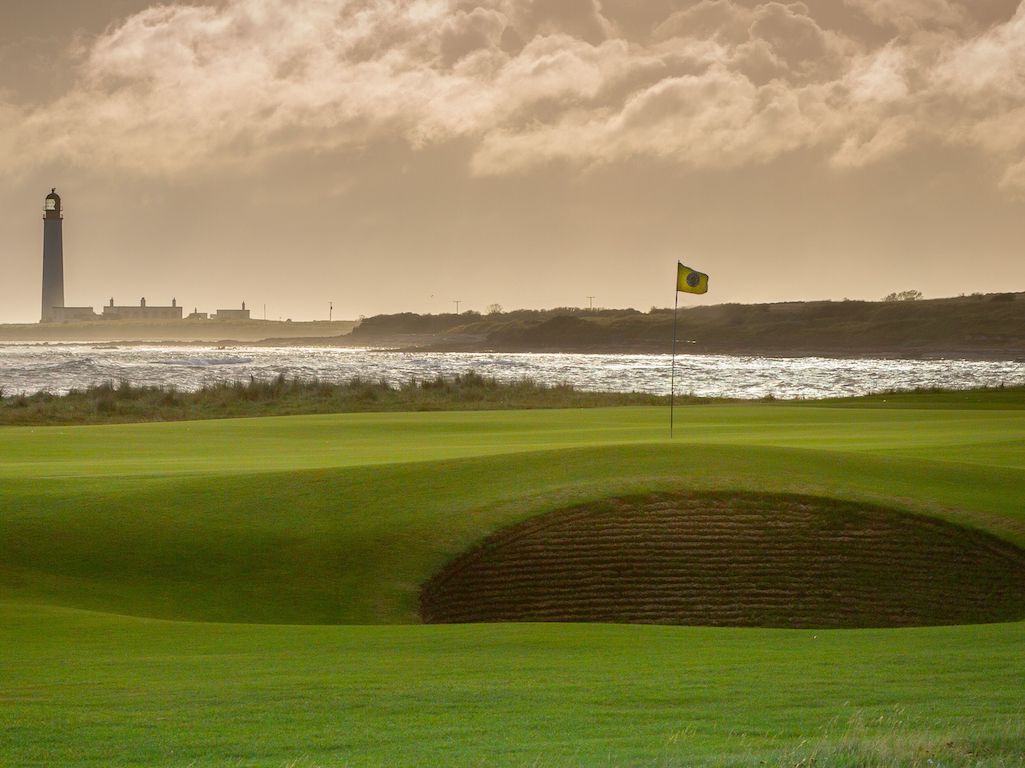
Another Open Championship has come and gone and links golf was once again in the spotlight at Royal Troon! For those who have never played a links course (like myself), it sparks a desire to fly across the pond to experience it for ourselves. While a golf trip to the UK or Ireland is a bucket-list item, most people look to play the big-name courses (Old Course, Carnoustie, Lahinch, Royal Portrush,etc.), but don’t realize they can get a similar experience by traveling to some of the lesser known destinations where you will find some of the purest links courses in the world. With this in mind, here are our picks for the best hidden gem links courses you should play when you book a UK or Ireland trip:
IRELAND
We start our list off with a 36-hole club in the Northwest of Ireland, a remote area of the Emerald Isle that is known for its rugged terrain and spectacular scenery. Bordering the Wild Atlantic Way, Ballyliffin is relatively newer (est. 1947) but offers golfers one of the purest links golf experiences anywhere in the country. While not easy to get to, the two courses onsite (Old and Glashedy) are well worth the travel with large dunes shaping the fairways that overlook the North Atlantic Ocean and a myriad of pot bunkers everywhere you look. Even Rory McIlroy believes that “Ballyliffin’s two courses are a must play on any golf trip to Ireland.” and we tend to agree.

How to incorporate Ballyliffin in a golf trip:
Stay:Ballyliffin Lodge, Hotel & Spa
Play: Old Links & Glashedy Links at Ballyliffin, and Old Tom Morris Links or Sandy Hills Course at Rosapenna
The next course on the list is in the Sligo area of the Northwest where we find Enniscrone, roughly 3 hours (by car) south of Ballyliffin. Like many links courses, Enniscrone was originally a 9-hole course when it was opened in 1918 before an additional 9 holes were added 12 years later. In 1970, Eddie Hackett was tasked with redesigning the course to help the two 9-hole courses flow effortlessly into one 18 hole layout. A big feature that can be seen throughout your round here are the towering dunes that shape the course and protect some holes from the ocean winds. Built right out of the landscape of the dunes bordering the sea, the course has a lot of undulation in the fairways and greens with some elevated tee boxes providing unreal views of the natural land.

How to incorporate Enniscrone in a golf trip:
Stay: The Glasshouse Hotel, Sligo
Play: Enniscrone, County Sligo, and Donegal
Additional Courses: Strandhill, Carne, and Narin & Portnoo
Another fantastic gem on the Northwest coast of Ireland is the NEW (2020) St. Patricks Links at Rosapenna Hotel & Golf Links. The land was purchased back in 2012 which was already a 36-hole facility and Tom Doak was brought in to reimagine the property to the layout it currently is today. Large sand dunes shape the front 9 holes before heading back through some more subtle dunes back towards the clubhouse. The course offers elevation changes with some tee boxes sitting atop the dunes offering spectacular views of Sheephaven Bay and beyond. With two other courses and a fantastic hotel on property, this destination is all you could ever ask for.

How to incorporate St. Patricks in a golf trip:
Stay: Rosapenna Hotel & Golf Links
Play: St. Patrick’s Links, Sandy Hills Course , and Old Tom Morris Links (all at Rosapenna)
For our last hidden gem in Ireland, we head 30 minutes north of the country’s capital, Dublin, to The Island Club. Built along rugged terrain and the highest sand dunes on the east coast of Ireland, the Island Club is situated on a small peninsula surrounded by water on three sides providing a difficult challenge, especially with the winds. Founded in 1890, the Island Club continues to be ranked in the Top 10 courses in Ireland and has held some Amateur Championships and Open Championship Regional Qualifiers.

How to incorporate The Island Club in a golf trip:
Stay: The Grand Hotel, Malahide
Play: Island Club, Portmarnock Old, County Louth
Additional Courses: Royal Dublin
SCOTLAND
Located along “Scotland’s Golf Coast” of East Lothian is where we find the classic links of Dunbar. Opened in 1856 with only 15 holes, this is one of the many courses in Scotland that Old Tom Morris had a hand in crafting. Laid out along rocky and rocky terrain, the course is only 6500 yards long and while not long by modern standards, the course requires shot making and proper club selection to play well. The course has held many national and international tournaments including a few rounds of The Open Final Qualifying.
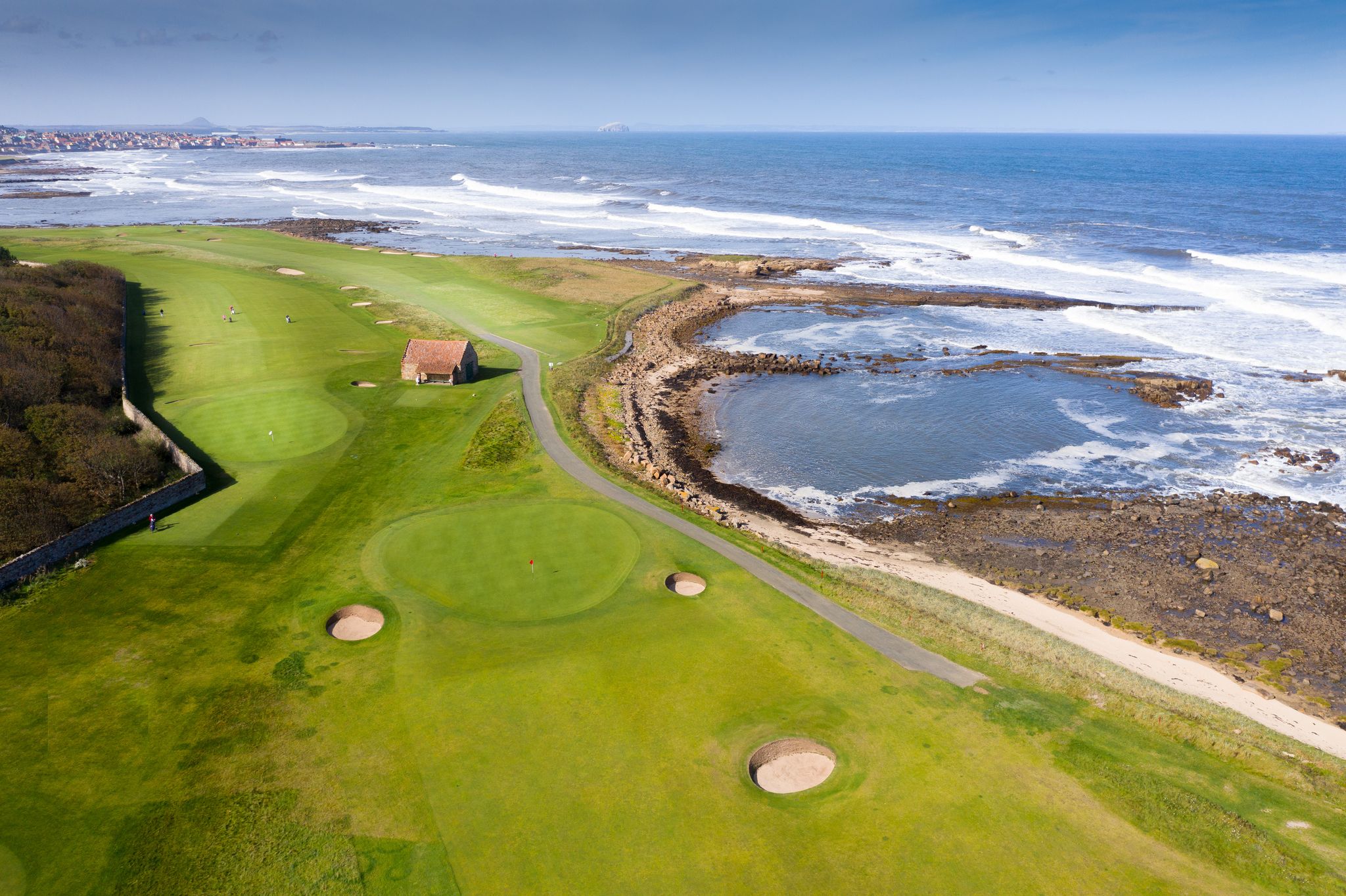
How to incorporate Dunbar in a golf trip:
Stay: No. 12 Hotel & Bistro
Play: Dunbar, Gullane (No.1), North Berwick
Additional Courses: Craigielaw, Kilspindie, Gullane (No.2, No. 3)
The next course on our list brings us to the Scottish Highlands, one of the lesser traveled destinations in Scotland, but still home to some amazing links courses including Cruden Bay! Located 25 miles north of Aberdeen on the east coast of the Highlands, Cruden Bay was opened in 1899, although history would indicate golf has been played at the property since 1791. Another Old Tom Morris design, the course is consistently ranked in the Top 25 of courses in Scotland and it is easy to see why. At only 6600 yards, it is relatively short, but the natural lay of the land provides elevation changes, punchbowl greens, and some large, 3-story high dunes that offer spectacular views for a classic links experience.

How to incorporate Cruden Bay in a golf trip:
Stay: Leonardo Hotel Aberdeen
Play: Cruden Bay, Trump International Links, Royal Aberdeen
Additional Courses: Murcar
We head back to the Highlands just north of Dornoch to where we find Brora Golf Club. Similar to a lot of links courses, Brora opened as only 9 holes in 1891, but that only lasted for 9 years before an additional 9 was added in 1900 before a James Braid redesign in 1924. At just over 6200 yards, this is one of those courses that will make you appreciate links golf in Scotland with cattle and sheep roaming freely around the property. The course is a typical links routing with the front 9 going out and the back 9 coming back to the clubhouse. The defense of the course is the wind (naturally), but the greens are relatively small with pot bunkers standing guard to catch errant approach shots.

How to incorporate Brora in a golf trip:
Stay: Royal Golf Hotel, Dornoch
Play: Brora, Royal Dornoch – Struie & Championship
Additional Courses: Golspie, Tain
Staying in the Scottish Highlands, the last Scotland links gem on the list is just outside of Inverness at The Nairn Golf Club. The narrow fairways are fast and firm leading to decent sized, tricky greens that roll true, but are guarded by devious pot bunkers. The first seven holes play right along the water and with not a ton of elevation changes, spectacular views across the Moray Firth can be seen throughout the course. With fantastic course conditions throughout the season, this fantastic links is an absolute must-play when visiting the Highlands.

How to incorporate Nairn in a golf trip:
Stay: Kingsmills Hotel, Inverness
Play: Nairn, Castle Stuart (Cabot Highlands), Fortrose & Rosemarkie
Additional Courses: Nairn Dunbar, Moray

Golfbreaks by PGA TOUR highly recommends you start planning your trip across the pond AT LEAST 12-18 months in advance in order to secure tee times and hotel rooms over the dates you desire. With more and more people taking up the game of golf, these bucket list trips have already become extremely popular and will continue to gain interest so make sure to start planning early!
RELATED: Open Championship courses you can play (and when the best time to book is)
Editor’s note: This article is presented in partnership with Golfbreaks. When you make a purchase through links in this article, GolfWRX may earn an affiliate commission.
Courses
Open Championship courses you can play (and when the best time to book is)

The final major of 2024 is nearly here as the top golfers head to Scotland’s southwestern coast to battle for the claret jug at Royal Troon. Golf’s original major dates all the way back to 1860 and has been played at 14 different courses throughout the United Kingdom (yes, this includes Northern Ireland) providing countless memories including celebrations, heartbreak, and unique moments that will never be forgotten (looking at you Jordan Spieth).
With The Open teeing off less than a week from now, we wanted to highlight some of The Open Championship’s finest links courses that should play when you make the journey to golf’s homeland:
- Old Course at St. Andrews
- Carnoustie
- Muirfield
- Royal Portrush
- Royal Troon
- Royal Birkdale
- Royal St George’s
Old Course at St. Andrews

Do we even need to say anything else? The “Home of Golf”, host of 30 Open Championships, the most coveted tee time in the WORLD, there are a million reasons to have St. Andrews on your links golf bucket list. From the double greens, to the tee shot over the Old Course Hotel, to the walk up 18th fairway with the town buildings framing a picturesque scene (especially at dusk), every golfer should make the voyage to St Andrews at least once in their life.

Carnoustie

Carnoustie – Championship Course
Roughly 25 miles north of St. Andrews lies the devious links of Carnoustie, often recognized by the large white Carnoustie Golf Hotel as the backdrop of the 18th green. While the course has only hosted The Open 8 times, it is considered to be one of the hardest layouts in The Open rota (just ask Jean Van de Velde) although not that long, playing just under 7000 yards from the tips.
Muirfield

Located right next to this week’s host of Scottish Open (The Renaissance Club), this fantastic links layout has hosted the prestigious Championship 16 times since 1892. The narrow fairways and penal rough requires precise shots off the tee while avoiding the devious pot bunkers is a must. The course is set away from the coastline so you won’t get the sweeping ocean views, but a round at Muirfield is one the premier tee times in all of Scotland (so make sure you book early – 12-18 months at least).
Royal Portrush

A view of the new 572 yards par 5, seventh hole designed by Martin Ebert on the Dunluce Course at Royal Portrush Golf Club the host club for the 2019 Open Championship in Portrush, Northern Ireland. © 2018 Rob Durston
Our next stop brings us across the Irish Sea to the northern coast of Northern Ireland and the popular Royal Portrush. Having hosted The Open only twice in its illustrious history, Royal Portrush is a golfer’s dream with 36 holes of pure links golf set against a gorgeous backdrop of the ocean and cliffs. The Open Championship will return to Portrush in 2025 and YOU CAN BE THERE to watch it all in person!
Royal Troon

TROON – JULY 26: General view of the ‘Postage Stamp’ par 3, 8th hole taken during a photoshoot held on July 26, 2003 at the Royal Troon Golf Club, venue for the 2004 Open Championships, in Troon, Scotland. (Photo by David Cannon/Getty Images)
The host of this year’s Open Championship, Royal Troon is home to one of the best par-3 holes in all of golf, “The Postage Stamp.” A downhill 125-yard tee shot to a minuscule green surrounded by bunkers on all sides makes it one of the more challenging holes. Another hole that adds to the challenge is the 601-yard par 5 that used to be the longest golf hole in Open Championship history. This year will be the 10th Open Championship held at Royal Troon, the first since 2016 when Mickelson and Stenson had a battle for the ages in the final round.
Royal Birkdale

For the next course on the list, we have to head down to the northwest coast of England just outside of Liverpool. Consistently ranked in the Top 10 courses in all the UK, this 10-time host of The Open has hosted many other prestigious events such as Ryder Cups, Women’s Opens, and more! The course is laid out with fairways running through flat-bottomed valleys surrounded by high dunes which provide many blind shots throughout the course. The Open returns to Royal Birkdale in 2026 so it won’t be long before it is back in the spotlight.
Royal St. George’s

For the final course on our list, we are staying in England, but heading across to the southeastern side of the country to Kent. Royal St. George’s is 4th on the list of most Open Championships hosted with 15 (1 behind Muirfield) the most recent being Collin Morikawa’s victory in 2021. RSG is the only active course on The Open rota in this part of the UK, but two former hosts (Prince’s and Royal Cinque Ports) are within 3 miles of the property. The expansive course is laid out with holes separated by dunes with heavy rough, undulating fairways, and deep pot bunkers to challenge your game. While it may not be mentioned in the discussions of St. Andrews, Carnoustie, and the like, Royal St. George’s is still a Championship layout that is worth the trip across the pond.

With these big-name courses in such high demand, it is important to note that if you want to play them, you need to start planning your trip early. Golfbreaks by PGA TOUR, the world’s #1 rated golf tour operator, suggests planning and booking your trip at least 12-18 months in advance in order to secure a tee time at the courses you want. The UK & Ireland specialists at Golfbreaks by PGA TOUR have the knowledge to help tailor the perfect golf trip for your group so you can play big-name courses and hidden gems you might not have heard of. If you’re ready to start planning your bucket list trip across the pond, make life easier and go with Golfbreaks by PGA TOUR.
Editor’s note: This article is presented in partnership with Golfbreaks. When you make a purchase through links in this article, GolfWRX may earn an affiliate commission.














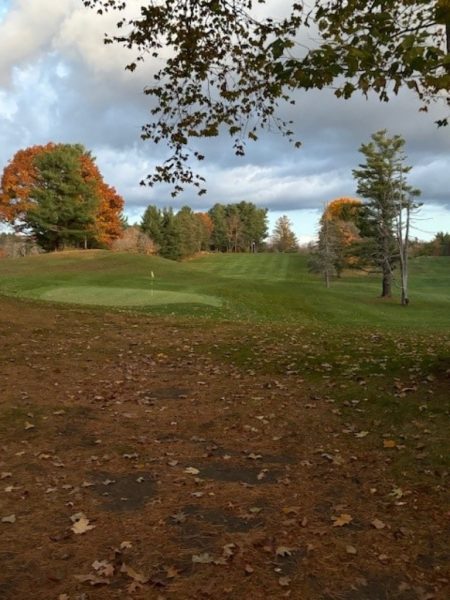
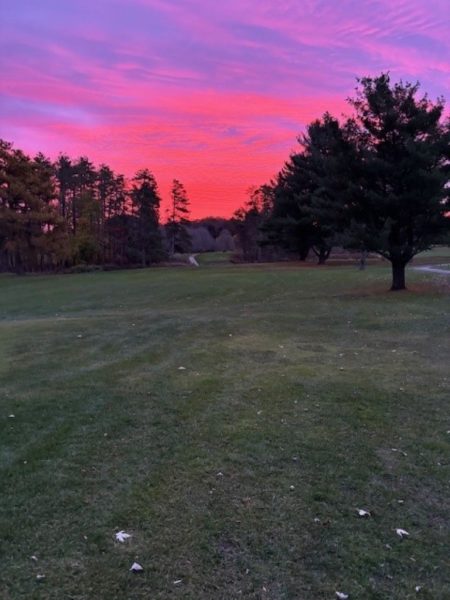
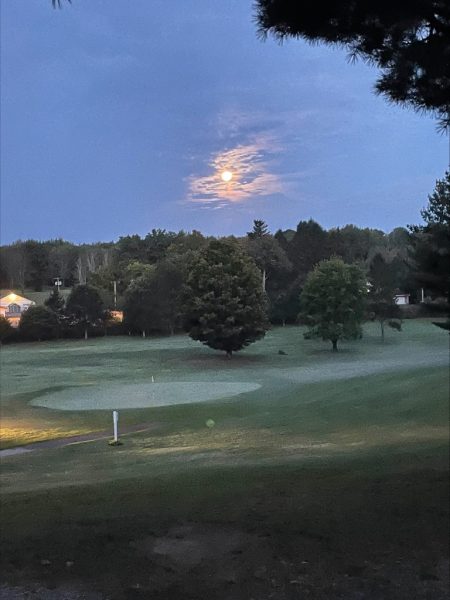
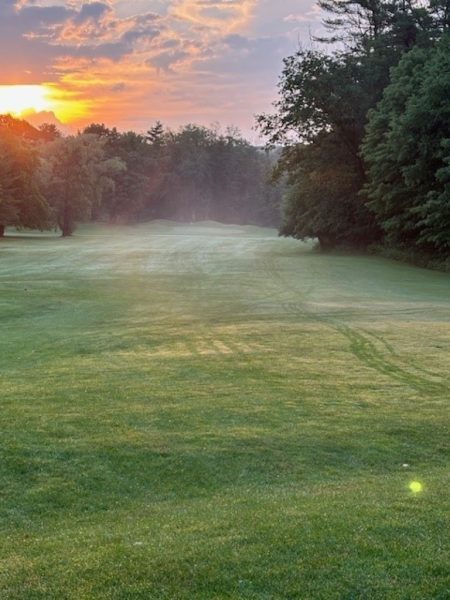
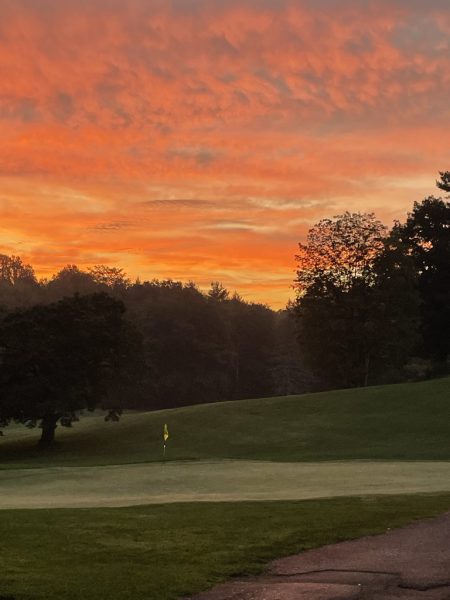
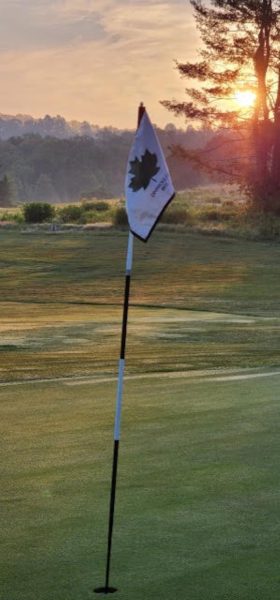
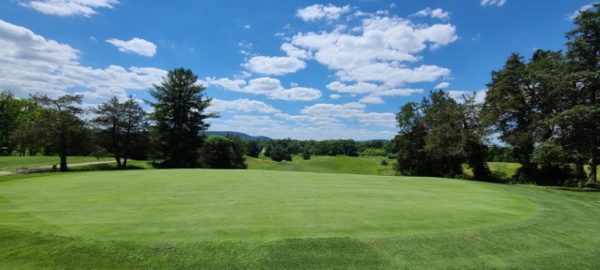
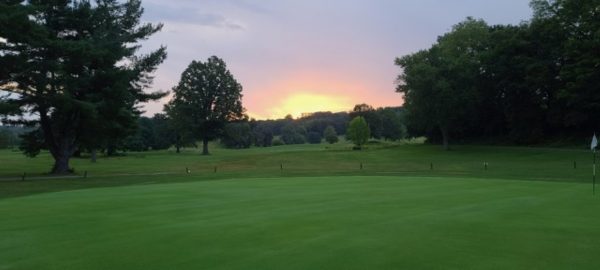
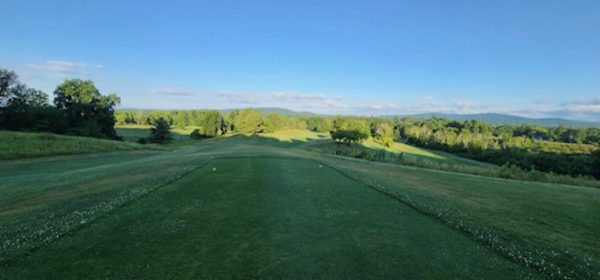
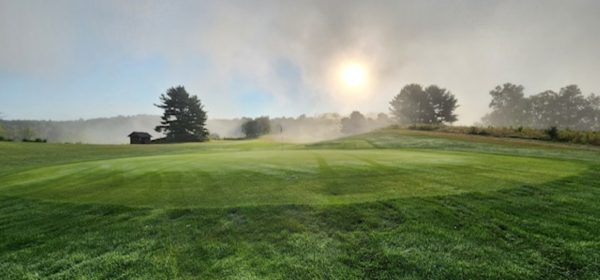
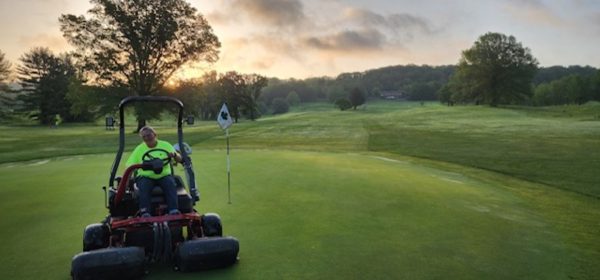
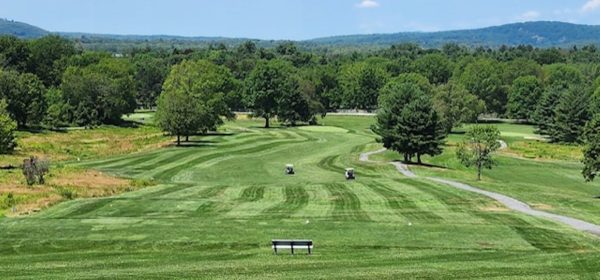
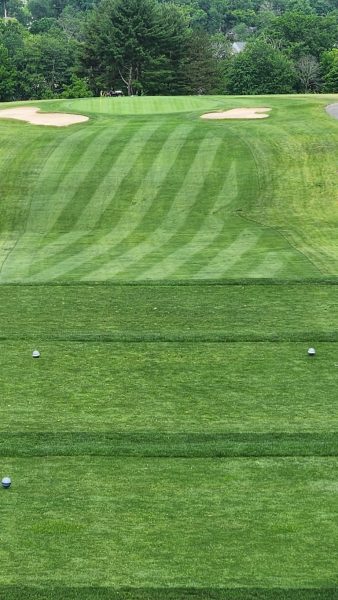

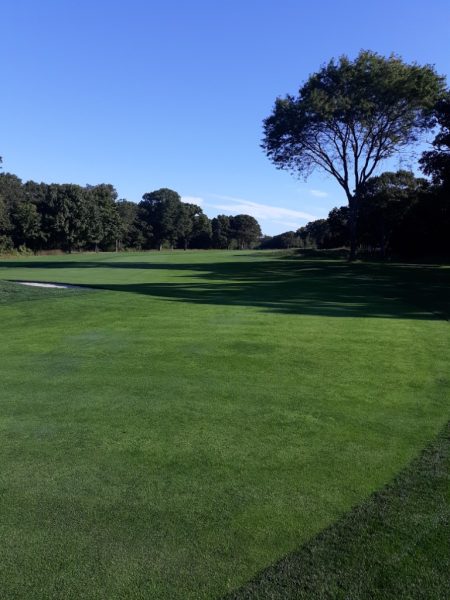

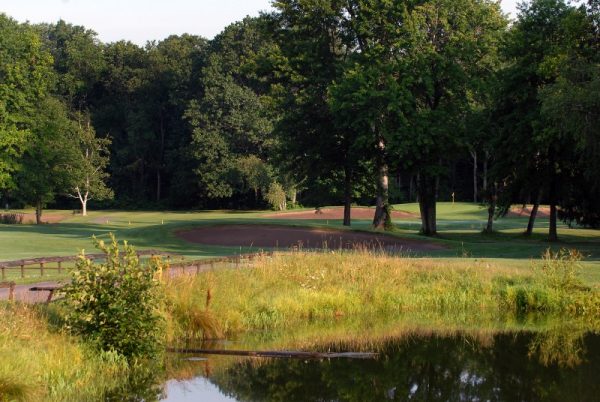
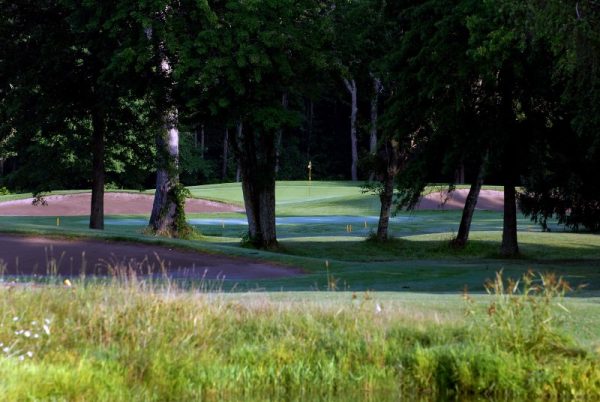
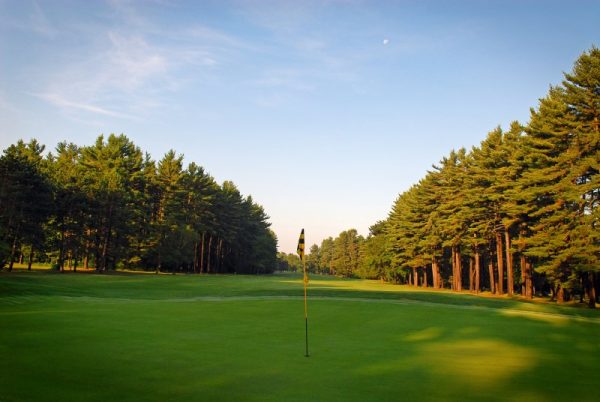
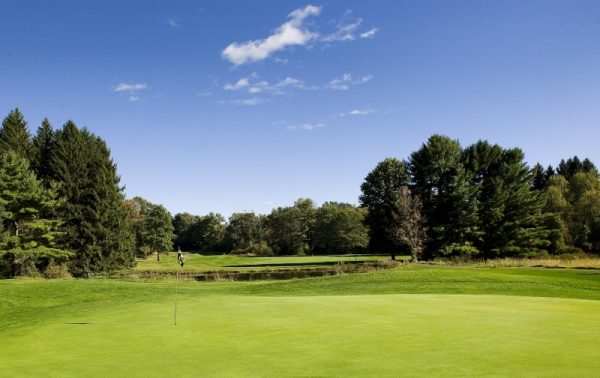
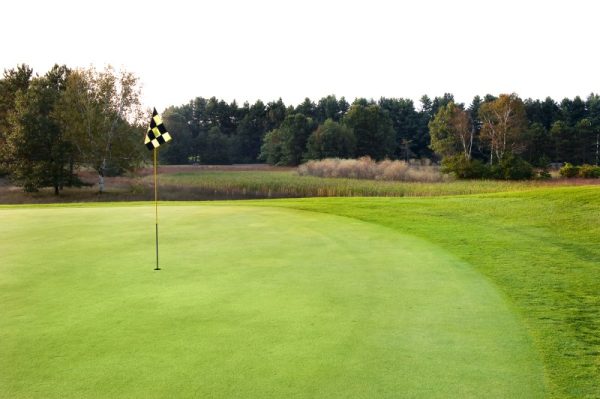
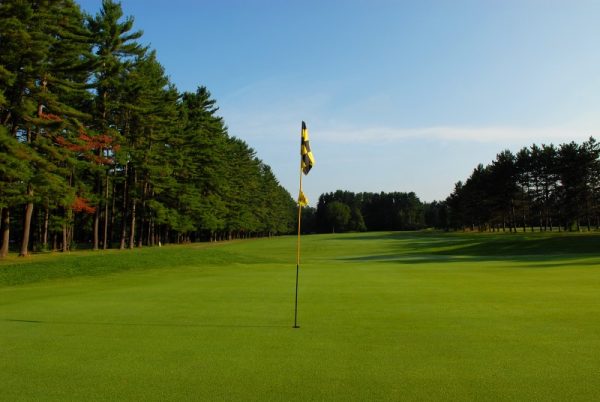
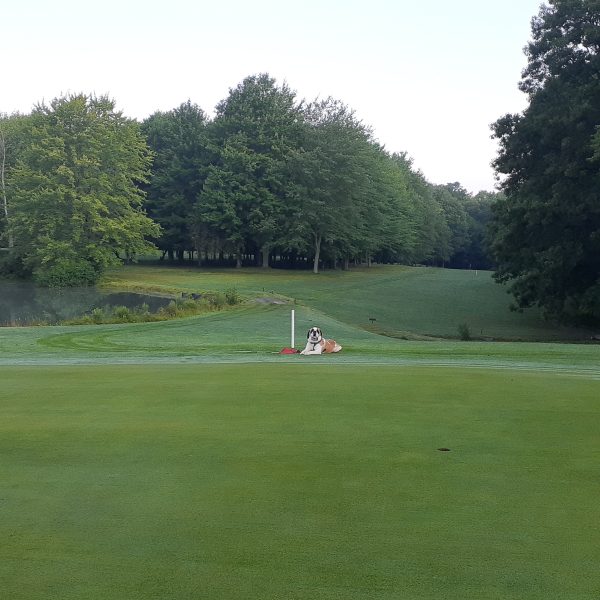
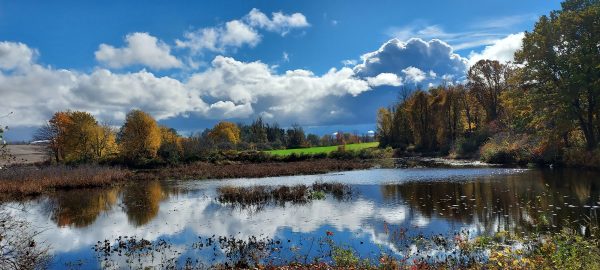
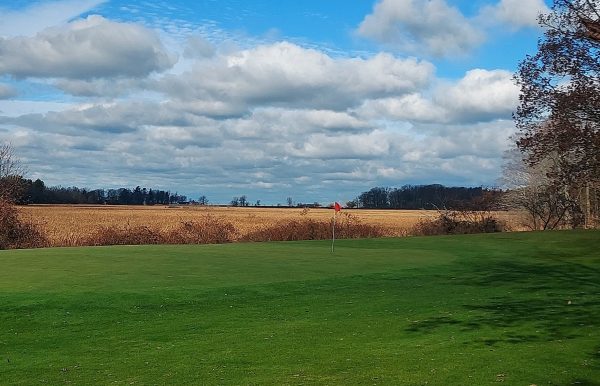
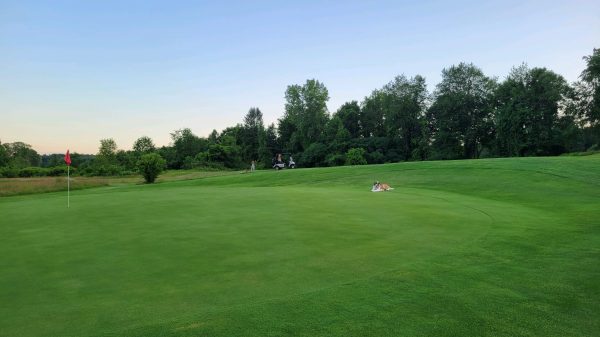
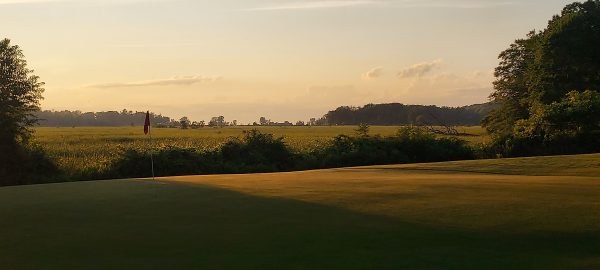
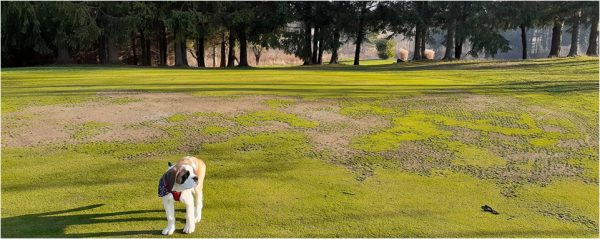
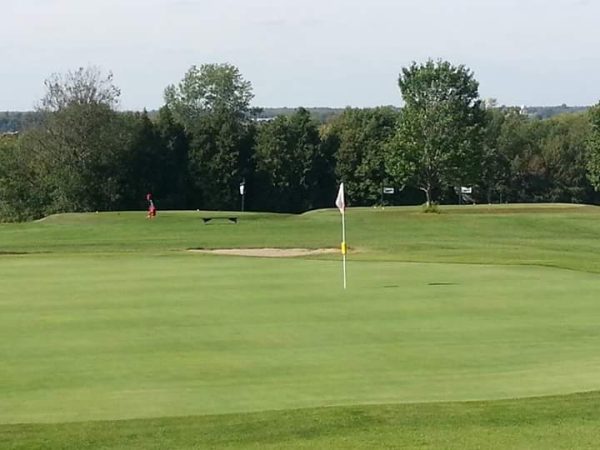
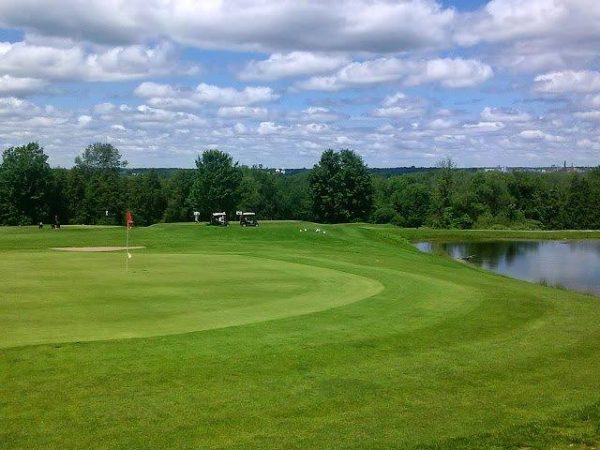
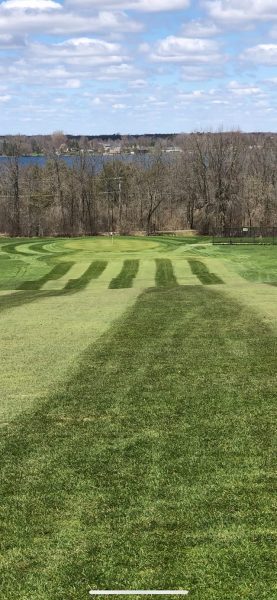

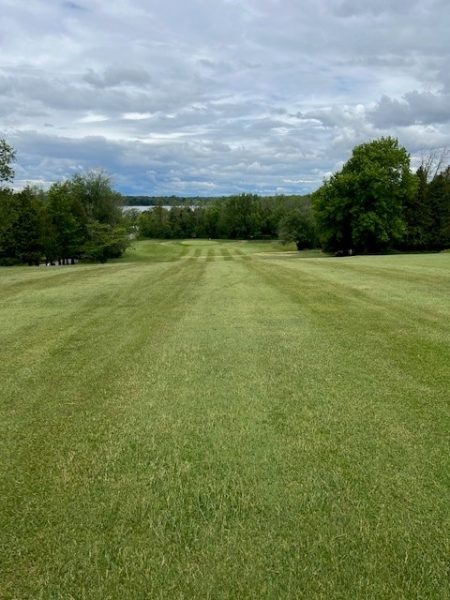
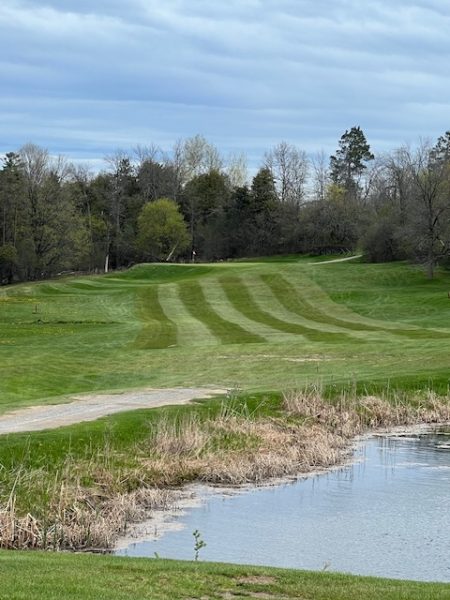
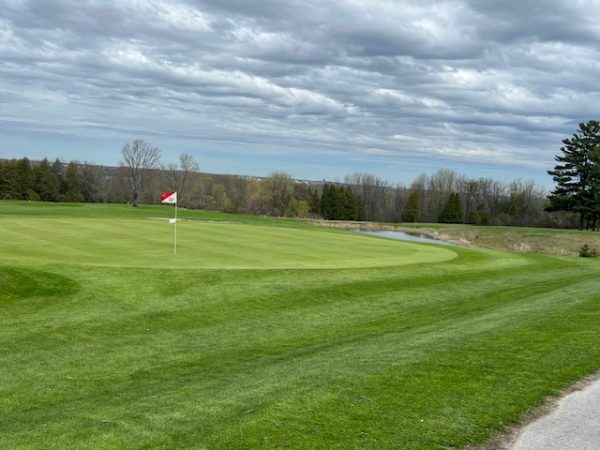
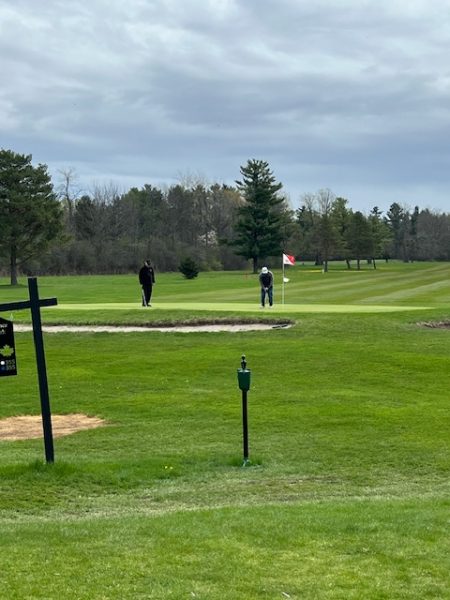
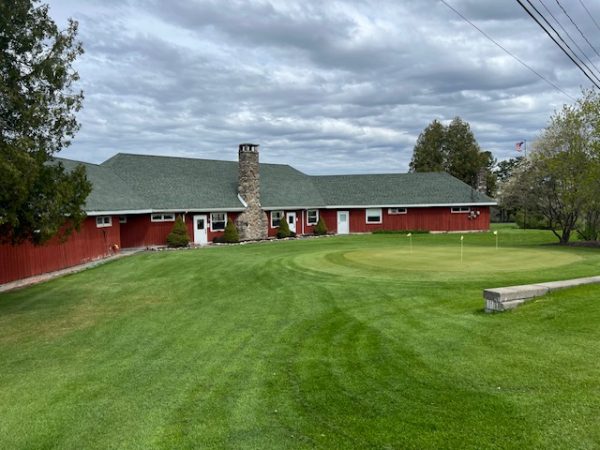
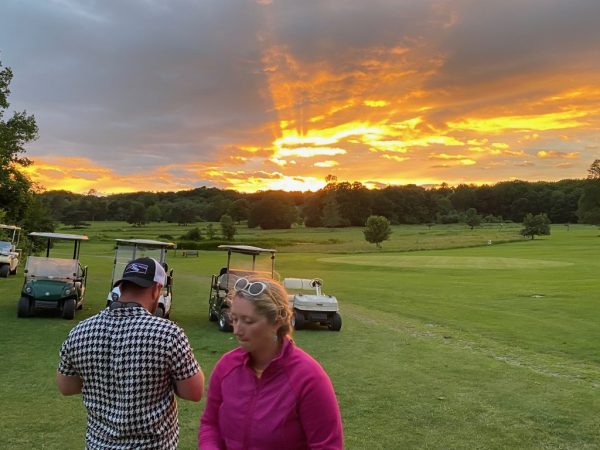
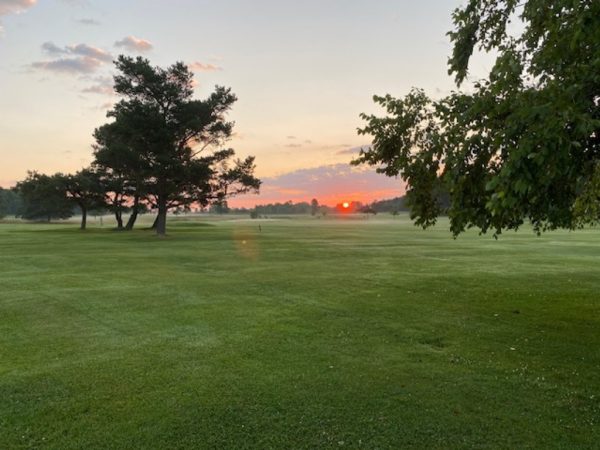
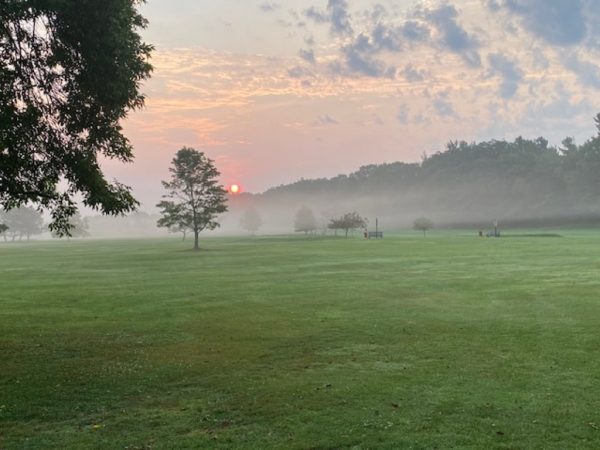
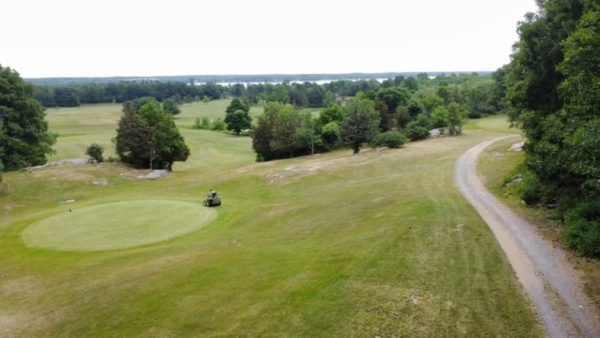

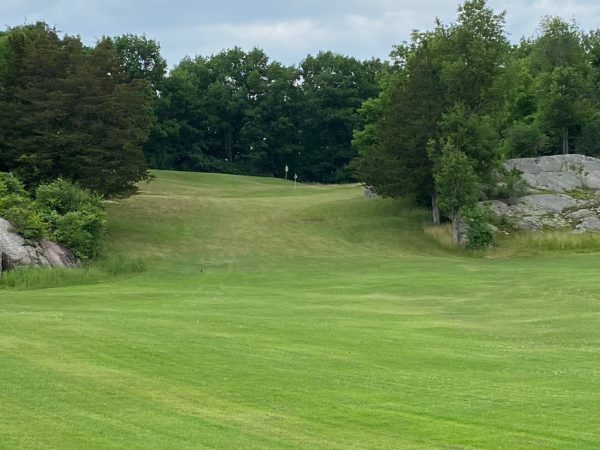






Courtney Connell
Feb 25, 2019 at 10:12 pm
Johnny,
Thank you for sharing your journey. Your story is well done. The photographs motivate me to pack my bags and leave for Bandon ASAP. I look forward with great enthusiasm to reading more stories.
Best,
Courtney
Johnny Newbern
Feb 26, 2019 at 2:07 pm
Thanks so much for the kind words, Courtney. You are a gentleman.
Scott Saunders
Feb 25, 2019 at 6:25 pm
Experienced BD for the first time a few weeks back. Huge group from Bellingham, WA that has been going for 20 years. It was transformative. Weather was mostly amazing. Though when it did get bad, I may have had the most fun I had all week.
As the author noted, Feb. was the perfect time to visit. Many, including caddies, noted that during warmer months the resort can be co-opted by wealthy types that change the feeling on-site. Visiting in the off-season seems to guarantee sharing the property with golf focused folk.
36 is very do-able during the winter, but you won’t have much time to waste in between rounds. Even in February most courses were pretty busy. While there is some maneuverability with switching courses/teetimes for afternoon rounds, you may get skunked if you don’t prearrange.
My ranking is:
1. Old Macdonald – while you only get one real look at the ocean(7 green), the sea still plays a big role. The sound of waves is prominent from 3-15, and fine fescue tee to green gives the impression you’re golfing in UK. The course is a monster moon-scape with holes that offer endless variety of shots. It’s the only course of the four that operates as such tee to green. The greens are >14Kft2 and alone require the analysis that most other holes on property demand from tee-green. You could honestly play that course every day for the rest of your life, and never play a hole the same way twice.
2. Pacific Dunes – Bandon perhaps has a bit more class as a big brother, but Pacific has a touch more scale on top of the views. Specifically, the green/surrounds are more complex and perilous. The greens here are noticeably firmer, demanding a touch more focus on the ground.
3. Bandon – holes 15-17 are probably the best 3 hole stretch I’ve ever played. It’s more scorable than PD, and in that regard feels more natural.
4. Bandon Trails – could be in any other locale in the US and be regarded as the best course in the state. It’s a totally different experience – aside from the first few and last few holes. You’ll have a blast on this course, but Bandon wouldn’t exist as it does if all the courses mirrored BT. Every other course could be the centerpiece of a world class golf resort. I just don’t feel that BT offers that sort of magic.
Daniel
Feb 25, 2019 at 6:05 pm
Where I come from we remove our caps indoors
Jason
Feb 26, 2019 at 4:26 pm
Where I come from we don’t put up with snobbish pricks who get there panties in a wad about stupid sh*t like whether or not somebody wears a hat indoors.
This guy writes a great, descriptive article about his golf trip to one of U.S. golf’s greatest gems, and all you can think to comment on is that???? Wow…. just, wow….
Gally
Feb 25, 2019 at 4:45 pm
Great article. Makes me wanna go back. Had the chance this weekend but the weather was apparently right out of Perfect Storm.
I’d put Pacific in the top spot (prolly cuz I won four skins in a group of 16) and Bandon #2. That said, you could play Bandon three out of four times and be very happy.
Bring a set of miura baby blades and a Jones bag — doesn’t get any more pure.
Johnny Newbern
Feb 26, 2019 at 2:12 pm
Thanks Gally. One of the guys in my group was playing Muira blades out there on the trip! So funny you say that.
Colin Moody
Feb 25, 2019 at 3:22 pm
Great feedback guys, and a very helpful article Johnny, as I am planning to play Brandon Dunes in July. The sad thing is I’m only going to get the chance to play one round, as me and the good lady wind our way up by car from SF to Seattle. This golf mad Brit really shouldn’t complain, given my long suffering, non golfing wife, is allowing me to tick off Pebble, Spyglass, Brandon and Chambers Bay from the bucket list on this trip!
TVGolfer
Feb 25, 2019 at 1:39 pm
Johnny, one of the guys in your group looks like a member of ours from Dalhousie Golf Club. Is one of your group named Andrew?
BTW, I did a Bandon trip in 2006 and still recount stories from it to this day. It is an epic place to play and build memories. So much different from midwestern golf. I would go back in a heartbeat!
Morety
Feb 25, 2019 at 1:59 pm
Yep, it’s me! Andrew from Dalhousie Golf Club.
Johnny Newbern
Feb 25, 2019 at 2:04 pm
Haha there you go. GolfWRX is where friends meet to greet.
TVGolfer
Feb 25, 2019 at 2:30 pm
Hey Andrew! This is awesome! I’ll buy you a beer sometime soon and we can swap Bandon stories! Great read!
Andy McNiece
Feb 25, 2019 at 12:57 pm
People frequently ask me which one is my favorite. My answer is always “whichever one I am playing at the moment”. It is an experience almost beyond words. Your article is exceptional. The other question I often hear is “which course should I play when I go” and my answer is always “every one of them”. Your article does a really great job of describing the experience but nothing is like being there.
Johnny Newbern
Feb 25, 2019 at 1:12 pm
Thanks so much, Andy. Glad you enjoyed it! It really is a special place.
ND Hickman
Feb 23, 2019 at 5:42 pm
Heard about this place in No Laying Up.
Russell Ziskey
Feb 22, 2019 at 6:08 pm
Great review of the experience! Being based in Seattle I get down to Bandon 2 times every year (buddies trip in mid December, a Bandon hosted tournament in May)….the Trails phenomenon is a thing: lowest expectations at 1st, then ends up being ur favorite for many…if I had 10 rounds – 3 ea on Trails & Pac, 2 ea on Mac and Bandon…Bandon is getting a 5th course with acquition of the Sheep Ranch! No official opening date but they’ve already built 11 greens// and prob open for summer 2020…McKees Pub: the lamb stew or the chicken pot pie wil make you forget the 22,000 steps for the day…Trails and Mac are the toughest walks – caddies r invaluable on those courses
especially if 36 is the plan…Shortys is another 9 hole par3 option right by the range // conditions aren’t as good as Preserve but it’s free and walkon // good for 8somes!!…Bunker bar is usually empty after 11pm due to sheer exhaustion so u can often have the place to yourself…